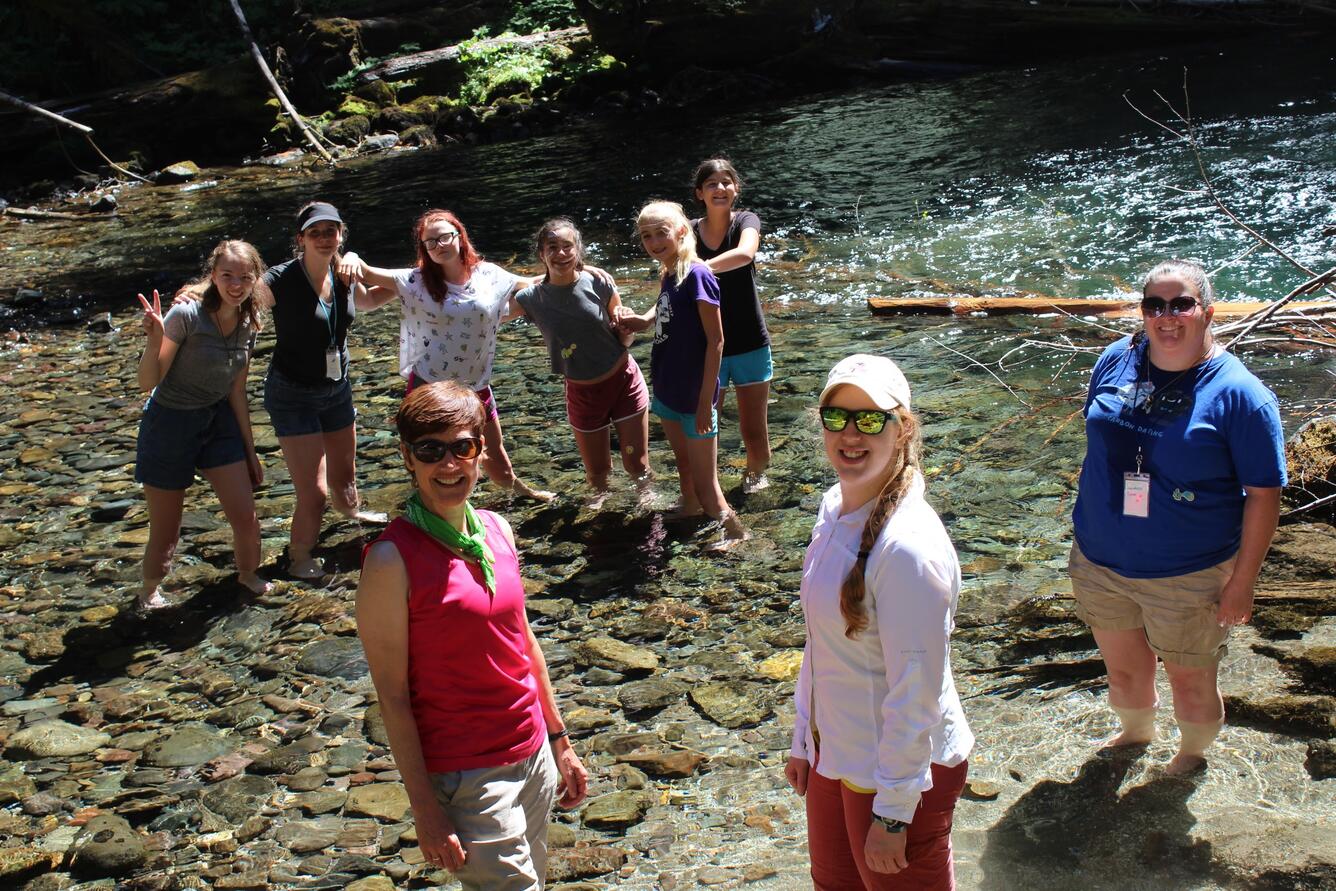Twenty-five middle-school girls from Washington and Oregon are participating in the fourth annual “GeoGirls” outdoor volcano science program at Mount St. Helens, jointly organized by the U.S. Geological Survey and the Mount St. Helens Institute.
During July 29–August 2, the GeoGirls will spend five days conducting hands-on research at Mount St. Helens, interacting with female scientists, educators and older students, learning about volcanoes, natural hazards and modern scientific monitoring technologies. They will camp, hike to field sites, work on research projects with scientists and learn how to document and share their scientific findings by building a public webpage.
On August 1, reporters are invited to participate in the program, talking to GeoGirls and scientists as they analyze earthquake data from seismometers, investigate the groundwater system in the landslide deposits from the 1980 eruption of Mount St. Helens, collect and interpret data on sediments at Coldwater Lake, examine thin slices of rocks under a petrographic microscope, or create a digital 3D model of the terrain using digital images captured from a balloon.
What:
Members of the news media are invited to observe research activities with GeoGirls program participants, and conduct interviews with students and program leaders.
Who:
USGS Cascades Volcano Observatory, Geologic Hazards Science Center and Volcano Disaster Assistance Program scientists;
Mount St. Helens Institute staff;
Scientist-leaders from Central Washington University, GHD, GRI, Oceaneering International, Oregon State University, Pierce County Emergency Management, Portland Community College, Portland State University, UC San Diego, University of Oregon, US Forest Service, Longview Parks and Recreation, Washington State Department of Ecology, Washington State Department of Natural Resources, and author Christine Colasurdo;
Science teachers from Covington Middle School, International School of Beaverton, NOVA School, Wilson High School;
GeoGirls participants from Battle Ground, Castle Rock, Centralia, Everett, Greenacres, Husum, Kirkland, Longview, Olympia, Onalaska, Renton, Sunnyside, Toledo, Vancouver (WA), and Burns, Corvallis, Eugene, Forest Grove, Portland, Tigard (OR).
When:
Wednesday, August 1, 2018, by appointment between 10:30 a.m. – 2:30 p.m. PDT
Where:
Coldwater Science and Learning Center
19000 Spirit Lake Hwy, Milepost 43.3, State Route 504 Toutle, Washington.
RSVP:
No later than Tuesday, July 31, 12 p.m. PDT, with your expected arrival time and to receive schedule updates. See contacts above.
The GeoGirls program is offered through the Mount St. Helens Institute and is free to student participants through the generosity of numerous volunteers and private donors, along with grant funding from the American Association of University Women-Lewis County, Association of Women Geoscientists Foundation, Chevron, EMPOWER Women + Girls Clark County, National Science Foundation, Wheeler Foundation, and many private donors.
The goal of the GeoGirls program is for GeoGirls participants to emerge with a stronger understanding and connection to Earth systems and feel confident in choosing careers in science, technology, engineering, math or other STEM-related fields.
More information is available online.
GeoGirls Staff and Volunteers information is also available online.






